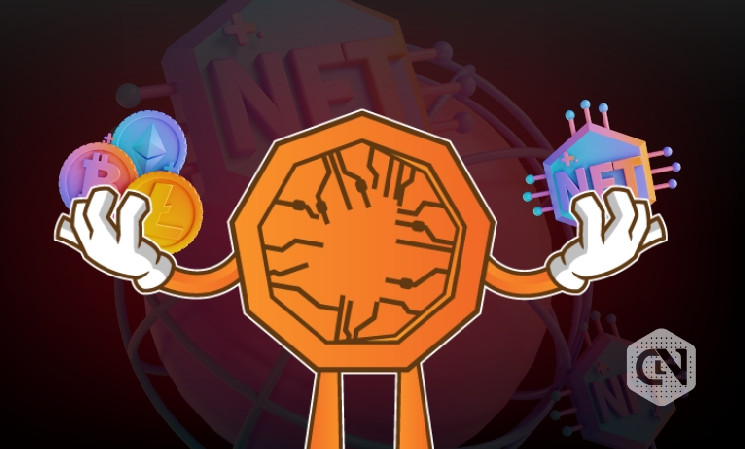The rapid adoption of digital assets is echoing every day in every industry, and the trend will continue to rise relentlessly. The two most popular forms of digital assets today include cryptocurrencies and NFTs (Non-Fungible Tokens), which are increasingly used by a maximum number of users. Although these two digital assets share blockchain technology among themselves, certain differences clearly set them apart.
This article aims to bring to light these differences by outlining several reasons that clearly distinguish them from each other. Simply put, we will discuss their unique features, technologies and tools to ensure how they have leveraged the world of digital assets. This will help you best understand what makes cryptocurrencies and NFTs different from each other.
NFTs explained
NFTs or non-fungible tokens refer to unique digital assets that do not allow replication or modification, whose authenticity is proven and whose purchase and sale traceability is included in a smart contract.
It also has several unique features:
Uniqueness: Regardless of the NFT type, its value is unique from its counterpart and other items, making it unique overall.
Indivisibility: NFTs are inherently non-divisible. This means that you cannot divide them into smaller units. This unique feature again sets them apart from cryptocurrencies.
Unchangeable: Thanks to blockchain technology and smart contracts that jointly prevent the destruction, replication or change of information.
NFTs are recognized as one of the most coveted and popular items in a variety of domains, for example:
Digital Art: Artists can digitize their digital artworks as NFTs and validate ownership of their creations and even sell them.
Collectibles: NFTs allow users to showcase the portfolio of their virtual collectibles in video games or digital card games.
Music and entertainment: NFTs allow music and entertainment users to sell their exclusive music tracks and movie clips or provide access to their content.
Cryptocurrencies and their utilities explained
Cryptocurrencies refer to digital assets, such as Bitcoin, Dogecoin, Ethereum, etc., that rely solely on blockchain technology for functionality. The innovative technology provides users with seamless security while conducting transactions on a computer network.
Cryptocurrencies are fundamentally dependent on blockchain, a cutting-edge technology that resonates with users due to its unique decentralization feature. Here are some of the popular utilities of cryptocurrencies:
Crypto Mining: Cryptocurrencies are widely used in crypto mining, a crucial process of creating various crypto coins, for example Bitcoin, Ethereum, etc.
Crypto investments: Cryptocurrencies have attracted the attention of investors to invest in them as they offer the opportunity to earn a potentially improved ROI over time.
Gambling and betting: Cryptocurrencies have gained immense prominence in the online casino gambling and sports betting industry due to their high speed, seamless security and increased anonymity. Cryptocurrency sports bettingEspecially recently it has resonated with maximum users as users are given the opportunity to bet on their favorite gambling events using notable cryptocurrencies such as Bitcoin, Ethereum, etc.
How are cryptos different from NFTs?
Cryptocurrencies and non-fungible tokens are classified as digital assets, but they vary significantly in purpose and functionalities. Simply put, cryptocurrencies are fungible assets, which implies that they are interchangeable and are fundamentally used for processing transactions and making investments. NFTs, on the other hand, are non-fungible in type and refer to varied tangible collectibles and works of art with unparalleled uniqueness. Although both digital assets are at the peak of popularity and demand, what sets them apart is the key factor of ‘fungibility’. In the following table, we list some key differences between cryptocurrencies and NFTs.
Conclusion
Cryptocurrencies and NFTs differ from each other in terms of their functionalities and features. Simply put, cryptocurrencies are fundamentally considered for making transactions and investments. In contrast, NFTs, which are unique goods or content that remain in the digital environment, are used by users to represent their exclusive tangible possessions and collectibles, as well as their ownership.
Regardless, both cryptocurrencies and NFTs are finding great success in the booming world of digital assets due to their unique features and functionalities that are resonating with users. Therefore, anyone looking to enter the realm of digital assets must be familiar with the fundamental differences between the two in advance to effectively streamline their journey.

